Assassin’s Creed Valhalla review
You can’t play as many Ubisoft games as I have through the years and not be familiar with the “Ubisoft jank”, that phenomenon where an otherwise great game is plagued not by a poor story or bad design decisions, but by a seemingly endless parade of bugs and glitches. Most recently, Watch Dogs: Legion suffered this fate, but it has been a recurring problem in Ubisoft’s franchises forever, and Assassin’s Creed Valhalla is no different. From two-headed Vikings to disappearing NPCs and catapulting corpses, Valhalla runs the gamut of technical glitches. And the fact that they haven’t in any way undermined my enjoyment of the game is testament to what a great job Ubisoft Montreal have done in all other ways this year.
In fact, a lot of those bugs were probably unavoidable for a number of reasons, but primarily because Valhalla might be the densest open world game I’ve played. It’s a common complaint in the genre that a world is too open, too empty, just great big fields of nothing connecting activities. This year’s Ghost of Tsushima boasts one of the busiest I’ve seen, but Valhalla tops even that. Fears that this would end up being bigger than 2018’s Odyssey will likely be proved true, but as with Kassandra’s and Alexios’ Greek adventure, Assassin’s Creed Valhalla is heaving with things to do.
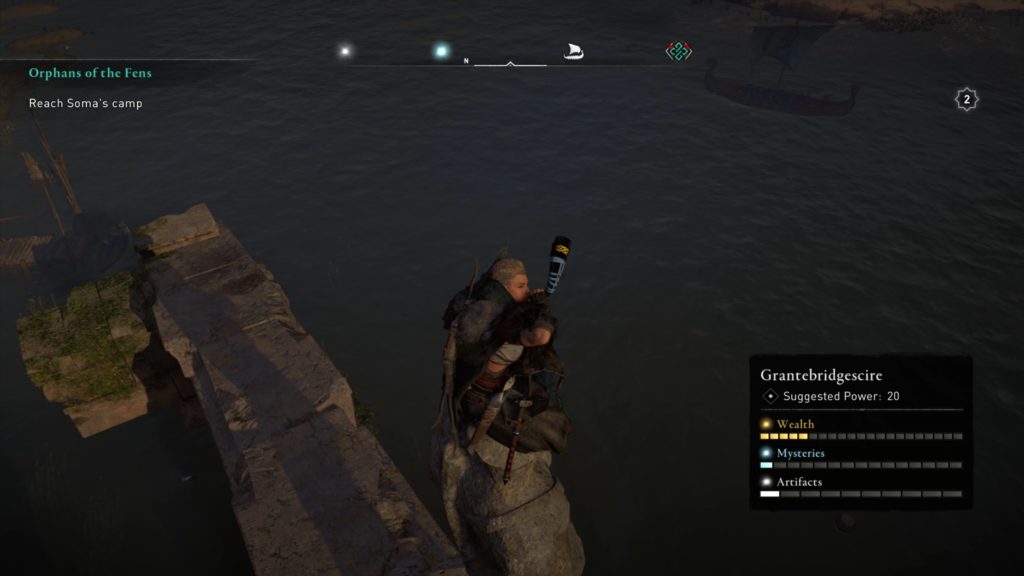
Thrust into the fur-lined boots of Eivor Wolf-kissed, your opening hours in the icy northlands of Ryglfylke, Norway, will be spent finding your feet. Perhaps deciding whether to be male or female, which you can switch at any time thanks to an anomaly in the Animus, or whether you’re going to be loyal to your elder foster-brother Sigurd, or in it for yourself. Without a hint of exaggeration, I had been playing for five hours before I saw the game’s title card, and by then I was well and truly ready for what lay beyond it.
Valhalla is the (almost) mature form of what Assassin’s Creed has been attempting to evolve into since Black Flag: a true open world RPG built on player choice and player freedom. By the time you sail away from your beloved Norway to begin a new life of pillaging and conquest in England, you’ll understand all of the systems and details you need to progress – at which point Ubisoft Montreal begin to throw more at you every few hours.
Most of it is nothing new, if we’re honest. You’ll chase down pages caught by the wind, which this time contain cosmetic designs for your tattoos and hair instead of shanties; you’ll come across high level mercenary knights in the wild who’ll hunt you down if you get too close, a la Odyssey; you’ll listen to your crew sings songs and tell rybald stories as your boat cuts swathes through the water, and you’ll use your hidden blade (this time worn on top of the wrist purely because Eivor is such a stone-cold badass) to slay members of the Templar Order hidden across the vast map.
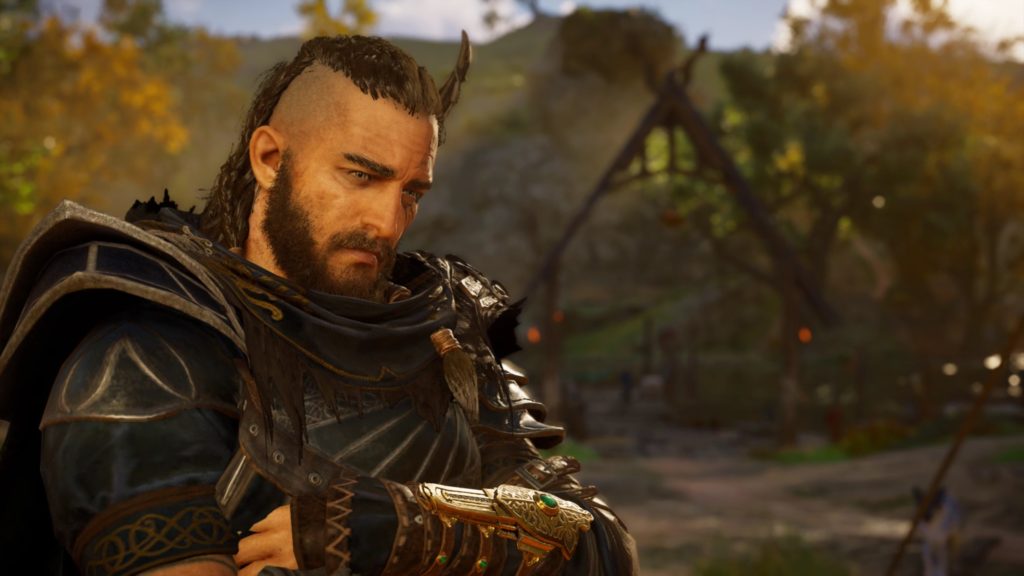
But you’ll also raise an army with which to raid Monasteries for silver and supplies, turn a few huts on the riverbank into a bustling village, challenge fellow warriors to drinking contests and hunt ancient legends through the Fens. You can take part in flyting (rhyming) contests that improve your charisma, and solve world events and mysteries to strengthen Eivor’s bond with the land. I’ve often said that it’s the protagonist that makes an Assassin’s Creed game succeed or fail as much as the setting, and Eivor is a solid candidate. Played female, she moves between being coldly calculating and a fiery force to be reckoned with; played male he’s as quietly savage as Vikings’ Ragnar Lothbrok and as charming as The Last Kingdom’s Uthred of Bebbanburg. There’s a soul to the character who, in classic Assassin’s Creed fashion, has no idea of their own fate or why people seem to flock to them.
The story as a whole is pretty compelling, as what begins as a quest for vengeance becomes something much more as Eivor and Sigurd sail to England to carve themselves a new life from mud and blood. Sigurd’s newest travel companions, Basim and Hytham, hail from the Brotherhood of Assassins, and it is they who induct Eivor into their ranks to help track down a sect of Templars who have seized positions of power in Saxon England. Or, at least, that’s what they tell you. Although, it’s not simply the plot that impresses, but your place in it. Ubisoft throw many decisions at you throughout the story, and are often clever enough not to reveal the repercussions until much later, preventing all but the most dedicated from save-scumming until they get the better outcome. These decisions impact many things from your allies and enemies, to whether characters live or die, stay in England or sail away forever. It’s a personal story in all the ways that count, and Eivor is a sound protagonist to experience it with.
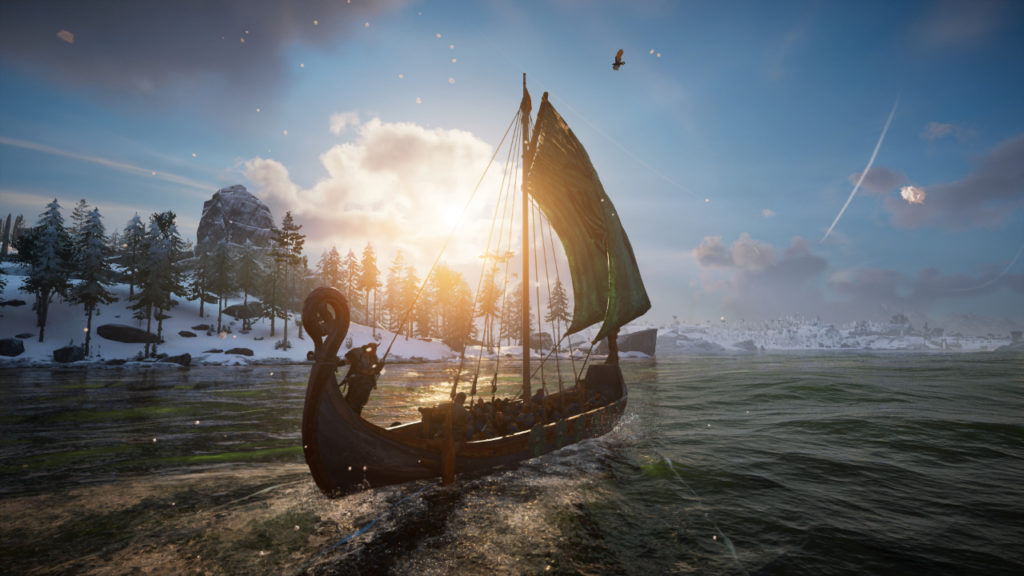
They’re also brutal, which is probably to be expected. The combat in Valhalla feels deliberately less nuanced and tactical, trading Odyssey’s cautious approach for a chain of blistering assaults on your unfortunate foes. Eivor can wield a number of weapons from axes and swords, to hammers, flails, two-handed great-axes and sharp daggers. They can even wade into battle dual-wielding shields if you like and the combat is built for a multitude of combinations.
Fights are fast-paced and satisfyingly violent, with finishing moves that damn near rock the screen. The onus is on beating an opponent to their knees and going for a Stun Attack, which will often finish a fight there and then. With a standard light, heavy, parry, evade set-up, the combat is nothing we haven’t seen before, but with added Viking. Even light blows come down hard, and a variety of unlockable abilities and special skills steadily form a lethal, vicious arsenal with which to defeat your enemies. Of course, you can choose to go the stealthy route if you like, surveying the area with your raven, Sunin, before sneaking into an encampment and despatching enemies from the tall grass – but as with Odyssey before it, Assassin’s Creed Valhalla likes to watch you dance. A predictably dizzy camera can often be a minor hindrance during larger-scale fights, but it’s nothing game-breaking.
To match the vast map, you’ve a vast skill tree, filled with dozens and dozens of nodes to unlock with skill points. Each node will increase an attribute such as Health, Stealth Damage or Bow Range, while every few will unlock a new finisher or special move that can be mixed in with your combat repertoire, such as the ability to quickly switch dual-wielded weapons from hand to hand in order to vary your attacks. Each node you unlock increases your overall power level, which is what determines which Shires of England you can survive a trek through and which you’re better sailing around or sneaking across until you’re tougher.
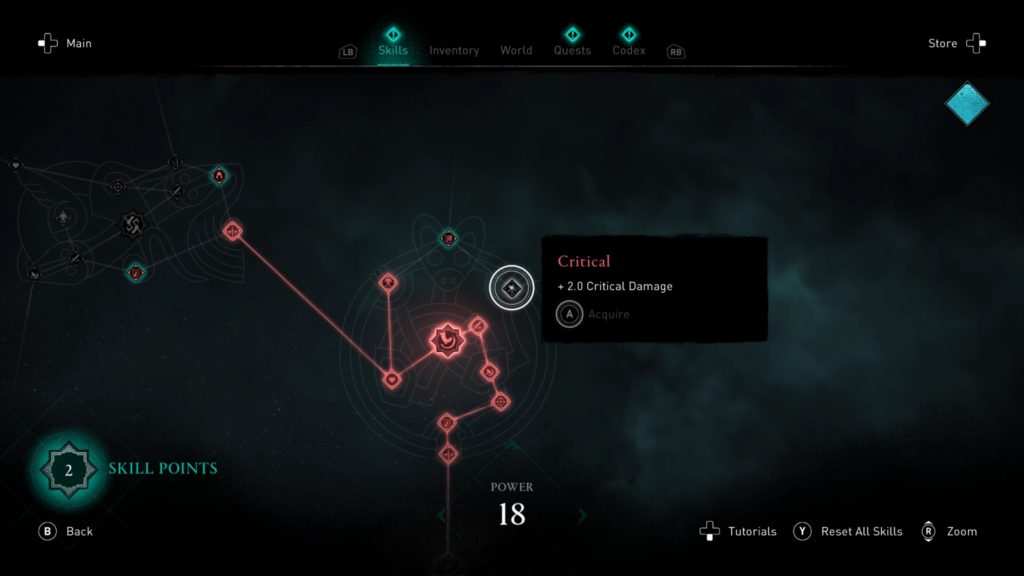
And it’s worth exploring everywhere, too. While the familiar vantage points return from which you can survey the surrounding lands and synchronise Layla’s memories in the present, Ubisoft Montreal have littered the map with things to find. From little settlements and enemy outposts to hidden collectibles, environmental puzzles, amusing side-concerns, bounties to hunt, side quests to embark on, treasures to track down and legendary beasts to hunt for great rewards.
The gear system has been toned down considerably since Odyssey, with equippable loot found much less frequently. Instead, the focus is on finding the materials necessary to upgrade each item you come across, altering the appearance at your blacksmith and improving the stats yourself by using up your supplies of metal and fabric. As a result you spend less time sifting through vendor trash and more time switching gear to suit a specific style. Armour sets are divided into Wolf, Bear, and Raven classes, offering bonuses to ranged, melee, and stealth skills respectively, with further bonuses conveyed for wearing half and full sets. Graded from basic grey through bronze, silver and gold levels, your armour choice is as important as using the right combination of skills and stats.
As you raid and adventure, you’ll bring home supplies and materials with which to build your settlement. Each level you raise it will introduce new residents and new opportunities for buildings such as a shipyard, tattoo shop, merchant, stables and barracks. The latter also allows you to create your own Jomsviking, a soldier-at-arms who can be summoned by other players like a Pawn in Dragon’s Dogma, and will bring you back a tribute each time they’re used.
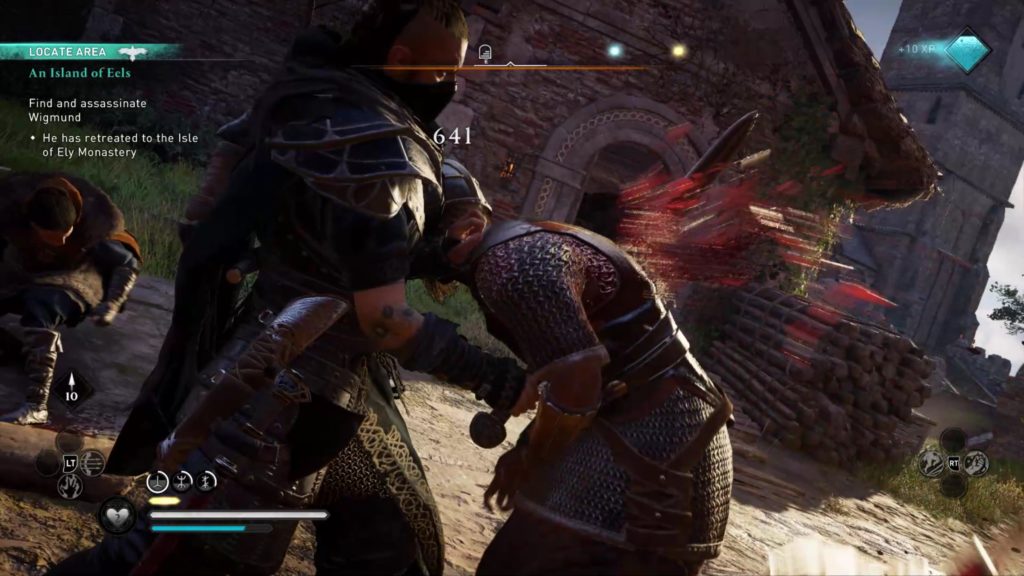
Even after 20 hours, I was discovering new things in Assassin’s Creed Valhalla. Secrets and Easter eggs, or new activities, characters and stories. The world, too, is stunning, and just as in Watch Dogs: Legion I found myself grinning from ear to ear when a character mentioned a place that’s just down the road from me in the real world. From the snow-draped crags of Norway to the gilded hills and shimmering rivers of Mercia, Valhalla’s world begs to be explored, more than once giving me pause to take a screenshot or simply marvel at the level of detail. Ubisoft Montreal might have crafted their most beautiful setting yet, and every moment I spent in it gave me something new to admire.
But, predictably, such a dense open world comes with its fair share of issues and even playing on PC with a GeForce RTX 2060 card, I had to fight with the graphics settings to maintain a stable framerate even when the in-game performance monitor was telling me it was stable. There’s so much going on here, from reflections in puddles to flocks and herds and packs of wildlife, staggeringly beautiful sunrises and battles with upwards of twenty combatants and a few dozen screaming NPCs, that I often experienced heavy stuttering despite what the framerate counter said that didn’t go away until I restarted the game. A pre-release patch fixed a lot of my issues, and further patches are promised, but it’s worth mentioning.
I also had a few problems with the enemy AI in general. For the most part they aren’t clever, and will often mill around or stand still during combat. The background fighting is mostly there for effect, of course, and it does it’s job – especially during Assaults when you have to take upon the battering ram as the armies clash around you – but it can break the immersion a little when the identikit enemies stand still or can be seen fighting with empty air. I’m sure it was done better in Odyssey, though my memory could be playing tricks.
Technical problems aside, I have no substantial complaints about Assassin’s Creed Valhalla. I’ve loved every minute of it. Whether or not it’s objectively “better” than Odyssey is hard to say, as deep down they are very similar games, but where I began to lose interest in the Twins’ story, I haven’t in Eivor’s – even the modern world Abstergo stuff is kept to a minimum but still compelling enough to follow, and the Layla character is still a million times more interesting than Desmond Miles. Your mileage will vary based on your tolerance for the Ubisoft Checklist, but fans of the series, the era, and open world RPGs in general will be easily swept away by the currents of Valhalla’s beautiful and brutal world.




